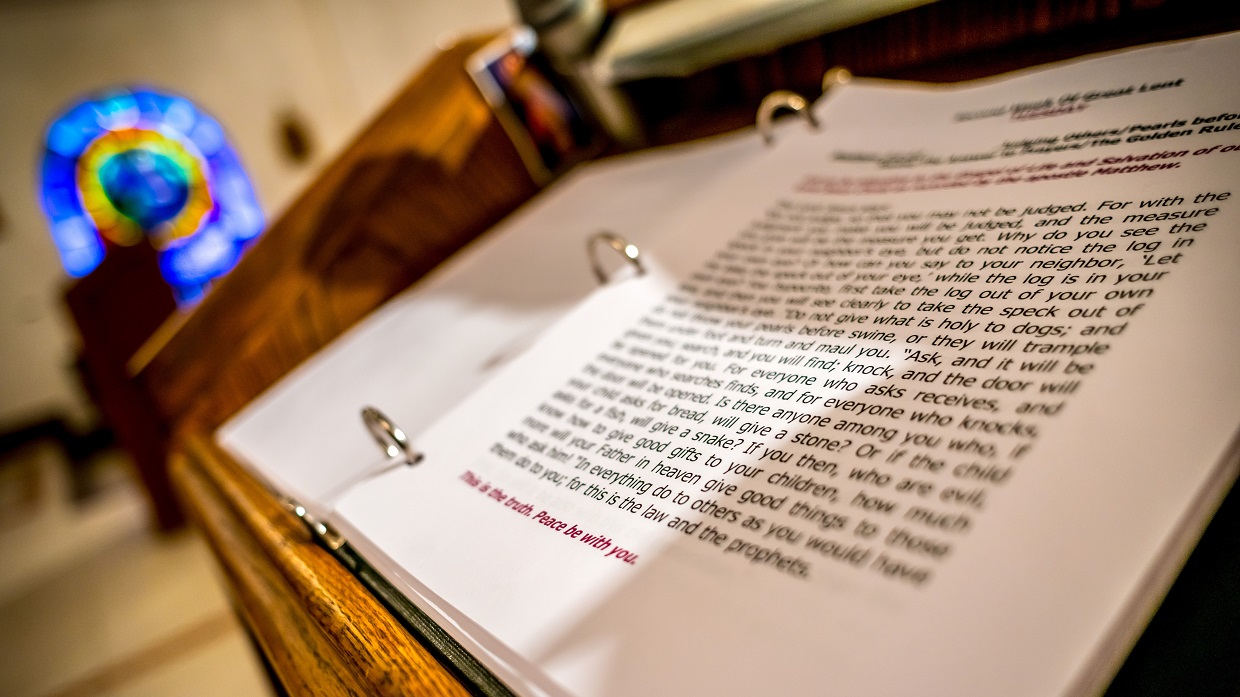Lyle Schaller wrote in The Change Agent: “Anyone seriously interested in planned social change would be well advised to recognize two facts of life. First, despite the claims of many, relatively little is known about how to achieve predictable change. Second, much of what is known will not work.”
That was 27 years ago. He’s still at it—quixotically tilting the windmill of change, and obviously enjoying it, too, in his latest book, Discontinuity and Hope: Radical Change and the Path to the Future (Abingdon, 1999).
Society, history, and church life have changed, not in a predictable, orderly, continuous way, but in rapid, disconcerting, discontinuous ways—more like a quantum leap than a logical next step.
That’s the discontinuity from the title. The church leader averse to change will see this discontinuity as a tidal wave crashing over the church and long for the good old days of simplicity and predictability.
Schaller, on the other hand, experienced enough to be a crusty curmudgeon of yesteryear, instead grabs his surfboard, yells to the rest of us “surf’s up!” and paddles out for the ride of his life on the mammoth wave of change. His knowledge of the wave is encyclopedic, his relish for it contagious, and his analysis optimistic. That’s the hope.
Shall we Schaller?
In a style absolutely characteristic of himself, Schaller writes a book of meticulous, long lists, with branching sublists, and sublists of the sublists. Maybe the book should be delivered poster-style as an elaborate outline—a tree on its side, with limbs and branches, each with bulleted points like clusters of fruit.
One could never accuse Schaller of not being thorough. Where many experts could devise six, eight, even ten characteristics of some phenomenon, Schaller would consider himself an underachiever with any fewer than 44. This causes a labored read, at times clogging the flow of ideas rather than enhancing it. This is not an elegant work to read avidly; rather, it’s a practical, insightful work to read systematically. It’s more a resource work than a piece of literature.
But it should be read!
What’s in those lists?
Schaller argues that “while there was considerable continuity in American Christianity between 1800 and 1960, the past four decades of Christianity in America have been marked by an unprecedented degree of discontinuity.” He cites churches’ current openness to divorced and remarried clergy, the way television has influenced worship, the erosion of longstanding institutional loyalties, and competition among the churches. Then Schaller provides a list of seven secular phenomena that are affecting churches, such things as regions becoming more significant than neighborhoods, and large-scale operations eclipsing small-scale. Next come 18 consequences of a new generation taking over, followed by seven stealth discontinuities that may have been overlooked.
Schaller concludes by looking at change through the eyes of various constituencies, such as ministers, parishioners, denominations, and seminaries. By the time you finish the book, you are swimming in a sea of changing tides, and, depending on how you view change, either as exhilarated as Schaller is or as stressed as I am.
Schaller nuggets
My great delight in Schaller comes from the little nuggets he scatters like birdseed. I remain amazed at how he gathers such an abundant supply of facts and figures, ideas and analyses. He is always worth reading. Here’s just a minor store of the good seed Schaller dispenses:
- On church cooperation: “Intercongregational cooperation in member-oriented ministries and programs (worship, teaching, evangelism, spiritual formation, etc.) is not compatible with numerical growth” (p. 41).
- On the churches most at risk: “Congregations near the top of the endangered ecclesiastical species list are the churches averaging 85 to 200 at worship” (p. 66).
- On how to advertise better: Use a consumer-oriented approach that “usually begins with a question in big bold type … (such as) ‘Need help raising your children?'” (p. 90).
- On people groupings: “The greater the degree of heterogeneity in the larger group, the more likely that individuals will seek to be part of a relatively homogeneous subgroup that serves as a comfortable stability zone.” (p. 95).
- On becoming adult: ” … in 1940, 60 percent of employed adolescents worked in traditional workplaces alongside adults who taught them both work and social skills. … By 1980 that proportion had dropped to 14 percent” (p. 124).
- On memorial services: “By 2005 the number of people who come to the church for the memorial service may be a tiny fraction of those who watch it via the Internet or on their home television screen” (p. 158).
- On which churches will have “an edge” in this increasingly competitive ecclesiastical environment: clearly those churches that proclaim the gospel of Jesus Christ with certainty” (p. 190).
- On how much land to buy for a church: “About three times what the most optimistic person on the committee recommended” (p. 125).
In the introduction, Schaller gives potential readers of his book a list of six choices in dealing with discontinuity: (1) to dispute Schaller’s facts, (2) to redefine the consequences, (3) to grow gloomy over it, (4) to see discontinuity as a sign of hope and reconfigure ministry to match it (obviously Schaller’s recommendation), (5) to buy and not read this book, and (6) to merely borrow a copy (which Schaller discourages, for some reason).
I could add a seventh choice: to read only this review and not the book. But that would be a shame, for going more than a year or so without a new Schaller book makes one’s ministry rather listless.
—James D. Berkley is a LEADERSHIP contributing editor and senior associate pastor of First Presbyterian Church 1717 Bellevue Way NE Bellevue WA 98004 jberkley@fpcbellevue.org
The New Tongues
Schaller on interpreting the language of therapy.
By far the most significant consequence in denominational circles of the emergence of the therapeutic society has been the change in the frame of reference and the language. An increasing array of divisive issues, ranging from world missions to abortion to ethnic separation to gender to evangelism to ministries with teenagers to the pedagogical approach of theological schools, are being discussed in therapeutic language rather than New Testament language. Scripture, doctrine, and tradition provide the frame of reference and the language for one side in these discussions, while the other side approaches the issue with a therapeutic frame of reference and language.
If one side presented their arguments in Russian and the other in Portuguese, that would make it easier to recognize (a) the existence of a problem in communication and (b) why the general public tends to ignore the whole debate.
The tendency for many congregations to become bilingual as some leaders rely on the therapeutic language while others prefer the New Testament language is one more reason why it is more difficult to be a parish pastor today than it was in the 1950s (pp. 154-155).
—Lyle Schaller in Discontinuity and Hope
AquaChurch: Essential Leadership Arts for Piloting Your Church into Today’s Fluid Culture by Leonard Sweet (Group, 1999)
Big Idea: In the sequel to Soul Tsunami, Sweet takes to the high seas to school church leaders in the skills necessary to survive and thrive. Moving from modernity to postmodernism launches the contemporary church on a sea of uncharted waters. Sailing metaphors offer navigational “arts” to chart the course. Sweet says focus on Christ, center in Scripture, take risks, cast vision, commit to teamwork, and communicate.
Some of his “arts” are less obvious. Leaders must learn to understand tradition, use music wisely, remember the importance of rest, and develop prayerful intuition. One great contribution is his case for using the Internet in advancing the church. The exercises with each chapter are also helpful.
Quote: “Postmodern spirituality, as well as intellectual and artistic endeavors, must come to terms with popular culture. To a culture where ‘any place can be a church, any song a prayer, and any person a priest’ (as one Gen-Xer put it), popular culture becomes even more important as spirituality is self-assembled” (p. 80).
Best Chapter: “Scanning the Horizon” makes the case for the necessity of change. Comprehensive and compelling, I was hooked for the rest of the book!
Buy If: you need skills for postmodern ministry and a better view of the vital role of the Internet in church life.
High Expectations: The Remarkable Secret for Keeping People in Your Church by Thom S. Rainer (Broadman & Holman, 1999)
Big Idea: People will live up to your expectations of them. Rainer gives a traditional view of church growth, but with a twist. Conventional wisdom says increase the flow of people from the culture into the church. Rainer says grow by closing the back door. He relies on solid research, not theories or programs that work in but a few churches. Bottom line: require more from new members and be intentional about it. The higher the expectation, the more likely they are to stay.
This book offers a fresh take on old strategies: track visitors, begin a new members’ class, develop a strong Sunday school, stay true to your mission. Rainer interviewed many church leaders to prove that demanding churches are more effective. I intend to share this widely among my staff and lay leadership.
Best Chapter: “Lessons from the High Expectation Church” gives 14 insights on moving to greater effectiveness. Rainer sums up his survey of 287 churches by reporting the commonalities in their preaching, teaching, evangelism, and assimilation.
Quote: “The typical church in America today has ‘dumbed down’ the meaning of membership to a point where membership means nothing. The phrase ‘inactive members’ is often used as if it were taken from the pages of Scripture. But in reality the only inactive members we see in the history of the New Testament fellowship are Ananias and Sapphira as they are carried out feet first (see Acts 5:1-11)” (p. 49).
Buy If: your church—especially your Sunday school team—needs help reaching and keeping people.
Ancient-Future Faith: Lessons from the Early Church for a Postmodern World by Robert Webber (Baker, 1999)
Big Idea: If Sweet’s vehicle to postmodern insight is a ship, Webber’s is a time machine. With an obvious love for writings of the church fathers, Webber weaves the ideals of classical Christianity with postmodern thought. The radical, countercultural faith of the early church is relevant to our age. Webber’s comparison covers Christ, the Church, worship, spirituality, missions and authority. The book is not without the potential for controversy. His thoughts on the authority of Scripture require careful reading. Consider thoughtfully even if you cannot agree with them all. Webber’s convictions about the parallels between ancient and future practices of the faith are worth consideration.
Best Chapter: “A Classical/Postmodern Mission” traces key concepts of both education and evangelism throughout history and applies them to our postmodern culture.
Quote: “In postmodern Christianity the authority of the Bible will be restored, not by more rational arguments, but by returning it to its rightful place in the development of the entire spectrum of Christian thought in the first six centuries of the church and by learning to read it canonically once again.”
Buy If: you enjoy thinking “outside the lines.”
—Ross Lokken Calvary Baptist Church 736 West Islay Street Santa Barbara CA 93101 calvary@silcom.com
To order books reviewed in LEADERSHIP, call 1-800-266-5766, dept. 1250.
Copyright © 2000 by the author or Christianity Today/Leadership Journal. Click here for reprint information on Leadership Journal.



